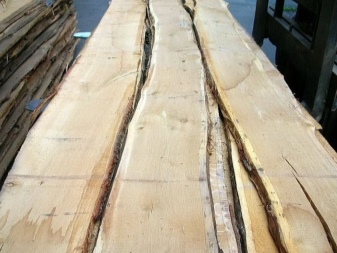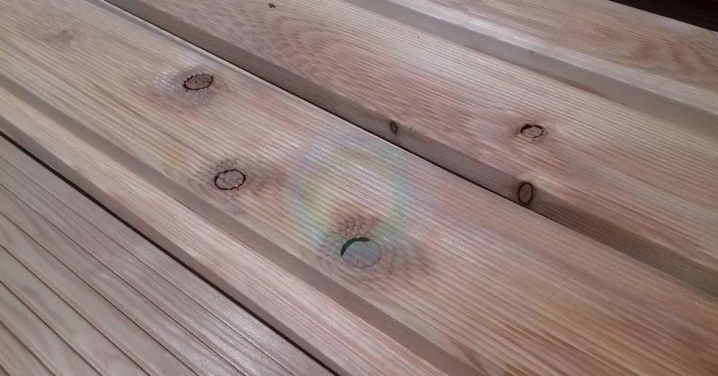All about boards of 3 grades

Boards of 3 grades - lumber, which has a fairly wide range of applications. To use it successfully, you need to carefully study the list of possible flaws in accordance with GOST. And also it is worth paying attention to the characteristics of edged and unedged boards of 3 grades.

Characteristic
It should be pointed out right away that according to GOST, a board of 3 grades can be divided into edged and unedged type. In the manufacture of edged boards, the size of the section can be from 1.6X0.8 to 25X10 cm. There are no special restrictions on the types of species used. Important: wane cannot be present in edged lumber. This is the name of the outer area covered with bark, which remains after the log was cut into pieces.


Formally standard allows a slight presence of wane. However, it is better to still select products without it. In the overwhelming majority of cases, the edged board reaches 3, 4 or 6 m in length (with an error of less than 1 mm). Other sizes are produced less frequently and mostly by direct order. As for the thickness of the board of the 3rd category, in our country it is mainly:
- 2,2;
- 2,5;
- 3;
- 4;
- 5;
- 10;
- 15 cm.

If you need to get a product of a different thickness, then for this, lumber of the usual size is sawn in the longitudinal plane, planed. An edged board with an aspect ratio of 1: 2 or less is included in the category of timber. The distinction between wood materials is also made according to the degree of saturation with water. The wet group includes products whose specific humidity exceeds 22%, the rest of the lumber is considered dry, but can still be treated with antiseptics.


Quite widely, you can find unedged boards of 3 grades. This material is relatively easy to process, which significantly increases its popularity. There is an additional division into fence and carpentry types - the first is much less aesthetic. In most cases, unedged boards are made from spruce and pine.


The main application is technical and auxiliary work. Important: the mechanical properties of the structures should be evaluated when choosing.
Wood flaws
The third-rate group includes lumber with frankly low quality. The presence of large naturally connected knots is not allowed in them. But the norm are:
- passages laid by worms;
- cracks passing through;
- knots of tobacco type;
- mold areas and nests;
- limited bearing capacity (which does not allow the use of this material for any responsible business).




When the lumber arrives at the warehouse, it is no longer checked for flaws. All that remains is only to trust the regulatory control, accompanying documents and your own knowledge. The establishment of the variety takes place on an area 1 m long on each side. If there is any difference between them, the category is assigned on the worst edge. Knots, the size of which is less than 50% of the allowable for the variety group, are not taken into account; if the board is longer than 3 m, then there may be 1 knot in it, corresponding not to 3, but to grade 4.

Normally, for grade 3, 4 strong knots are allowed, including intergrown ones, occupying up to ½ the width of the ribs and layers + 1 knot according to the criteria of grade 4. The edge can span 100% of the width - this is not a violation... Rotten knots that have reached a tobacco consistency can account for up to 50% (on the ribbed parts, on the edge and on the face). The volume of healthy knots, which have grown together only partially or not at all, can normally reach 1/3 in width.

Board 3 grade may contain cracks extending to the end plane (provided that they, together with cracks in other places, will reach no more than ½ in length). For reservoir through splitting, the restrictions are stricter - no more than 16.67%. Split and crushed cracks at the ends, with the exception of shrinkage cracks, are normally up to a maximum of 50%. Lumber of the 3rd grade category can have an ubiquitous slope of wood fibers.

Roll is also normalized (that is, a one-sided increase in the thickness of the growth rings on the trunk), this defect cannot occupy more than 50% of the seam surface.
There may be 4 resinous pockets on each side, but no more than 30 cm in length. Allowed by the standard and the presence of a double core. But the overgrown former wound, which has a slit-like void of a radius shape with partial preservation of the bark and degraded tissues, can be ¼ in width and 1/10 in length from one side. For plant crayfish, the limitation is set at 1 m or 1/3 in length, and the limitation is always lower. About mushroom core stripes and spots, it is only indicated that they are acceptable, but nothing is said about the number. Additionally, the following restrictions are set:
- worm moves - no more than 3 units per meter in each plane;
- mushroom-colored sapwood, spots and streaks of superficial mold are allowed;
- deep lesions with mold - no more than ½ in area;
- wane on seams with a distance of no more than 2 cm from the edges and up to 50% of the length of the edges;
- bevels of cuts maximum 1/20 from the perpendicular part of the end to the face and edge;
- wavy and torn areas maximum 3 mm deep;
- other mechanical defects, extraneous inclusions and processing deformations are not permissible;
- warping in diameter up to 2% of the width.

Application area
Most of the third-rate boards go to packaging products. Basically, we are talking about disposable boxes and containers for transportation. You can also make other packaging that does not have any special requirements for appearance. And also on the basis of this wood, flooring and pallets can be made. Sometimes 3 grades of wood are made of lightly loaded structural elements of secondary buildings invisible from the outside.

For information on how to choose a board of 3 grades, see the next video.













The comment was sent successfully.